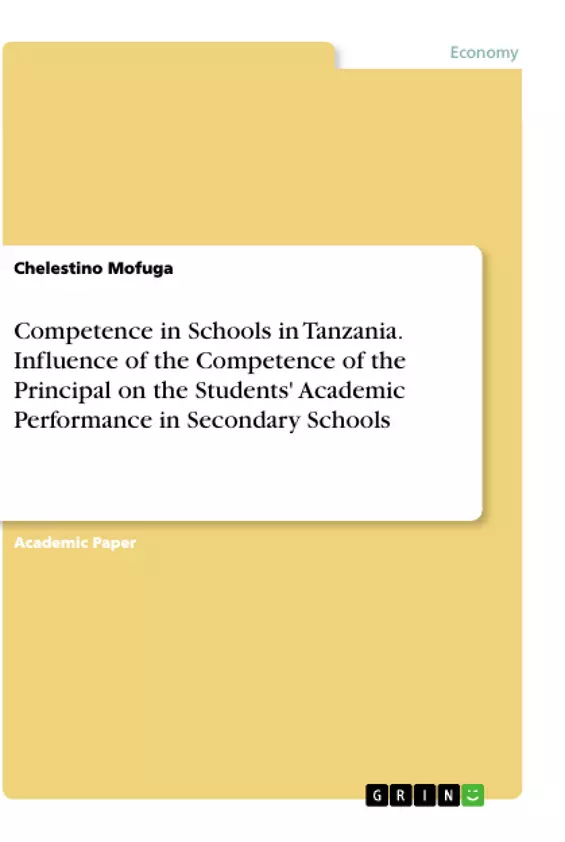This study assesses the influence of the competence of educational leaders on the students’ academic performance in secondary schools. An explanatory cross-sectional survey design with a concurrent mixed approach using quantitative and qualitative data was employed. A total of 202 teachers provided evidence on their heads of the school’s competence in influencing students’ academic performance using questionnaires, in-depth interviews and focus group discussions.
The collected data is analysed using SPSS version 23 for quantitative data, and thematic analysis for qualitative data. A significant relationship between the competence of the educational leader and a students’ academic performance was revealed. The study concludes that the competence attribute significantly influences the students’ academic performance.
Therefore, the study recommends the government to allocate enough funds for the professional development for the aspirant and review the educational policy on the training and development of teachers before and after their appointment into a leadership position.
Inhaltsverzeichnis (Table of Contents)
- Introduction
- Main Objectives
- Specific Objectives
- Methodology
- Qualitative Analysis
- Quantitative data analysis
- Findings and Discussion
- Conclusion
- Tables and Figures
- Disclosure of Conflict of Interest
- Acknowledgement
- References
Zielsetzung und Themenschwerpunkte (Objectives and Key Themes)
This study investigates the influence of the competence attributes of educational leaders on student academic performance in secondary schools in Tanzania. The research focuses on understanding the relationship between leadership competence and student achievement, aiming to identify how the skills, knowledge, and behaviors of school heads contribute to better academic outcomes. The study utilizes a mixed-methods approach, drawing on both quantitative and qualitative data to provide a comprehensive analysis.
- The relationship between leadership competence and student academic performance.
- The impact of teacher professional competence on student academic performance.
- The importance of teacher competence in improving cognitive abilities and academic achievement.
- The role of school leaders in fostering a positive and supportive learning environment.
- The need for professional development opportunities for aspiring and current school heads.
Zusammenfassung der Kapitel (Chapter Summaries)
- Introduction: This chapter sets the context for the study by discussing the importance of teacher competence in the 21st century. It highlights the need for quality education and the role of teachers in achieving this goal. The chapter also examines the various factors that can influence student academic performance, with a particular emphasis on the role of teacher competence.
- Methodology: This chapter outlines the research design and methodology employed in the study. It describes the data collection methods, including questionnaires, in-depth interviews, and focus group discussions. The chapter also explains the data analysis techniques used to examine the relationship between leadership competence and student academic performance.
- Findings and Discussion: This chapter presents the key findings of the study, examining the relationship between leadership competence and student academic performance. It explores the different aspects of leadership competence that contribute to better academic outcomes.
Schlüsselwörter (Keywords)
The study primarily focuses on competence, leadership, and academic performance. It explores the relationship between these elements in the context of secondary schools in Tanzania. Key terms include teacher professional competence, student achievement, leadership attributes, and educational policy.
- Quote paper
- Chelestino Mofuga (Author), 2020, Competence in Schools in Tanzania. Influence of the Competence of the Principal on the Students' Academic Performance in Secondary Schools, Munich, GRIN Verlag, https://www.grin.com/document/924976



